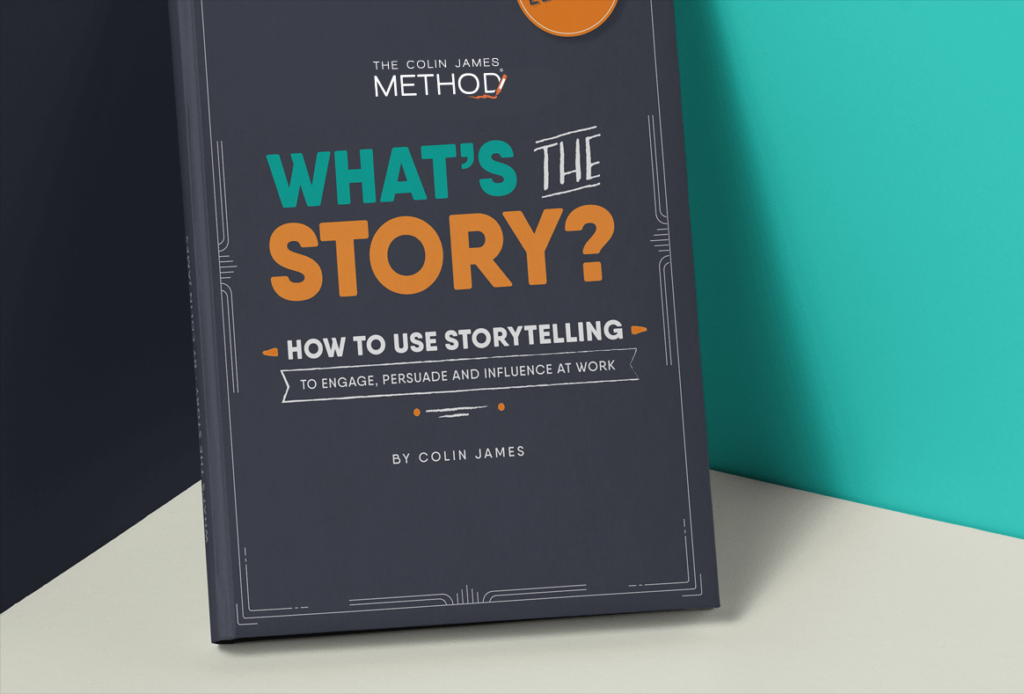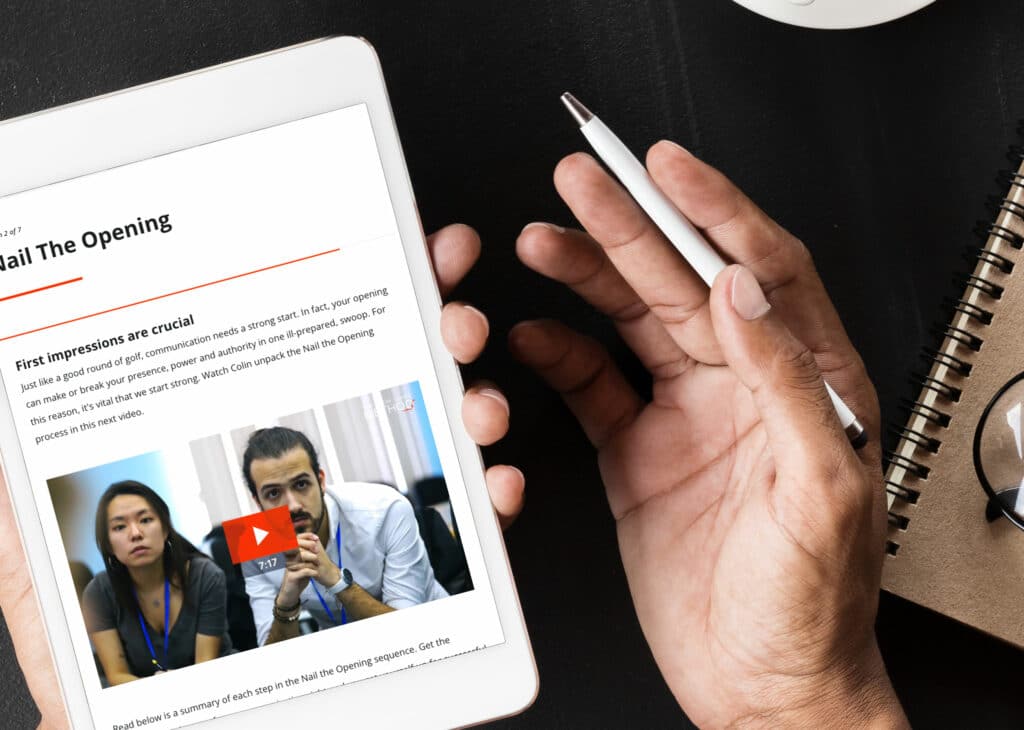People tend to be a bit perplexed by business storytelling training. But it’s actually quite simple. After all, stories come naturally to us.
In fact, every great speech or presentation I have ever heard has included a story.
I remember when I was at school actually, my English teacher was taking us through one of the classics — one that clearly didn’t appeal to me very much — and I asked her why we were bothering with this story that was hundreds of years old.
She looked at me, with a mix of disappointment and astonishment on her face, and said, “because stories teach us about ourselves.”
As much as I don’t think I fully understood or appreciated her response then, now I stand by it wholeheartedly.
Stories are an integral part of how we communicate. In fact, we’ve been communicating through storytelling for millennia. Behind every major religion is a book or texts filled with stories. These stories convey important messages to us. They make information memorable and meaningful. Stories are how we teach our children. They’re how we relate to one another as individuals, friends, partners.
But for some reason, in professional environments, storytelling often disappears. Our business storytelling training aims to redress this imbalance and equip ambitious professionals with the skills and confidence they need to get noticed and get promoted. And since we’ve already written extensively about why storytelling in business is so powerful, in this blog post I’d like to briefly cover how you can use storytelling as an effective public speaking tool.
“You need to strike the right balance, providing just enough information to keep them engaged”
Business storytelling training: 3 steps to impactful presentations
Stories should hold a significant place in our armoury of presentation tools but it’s not just any old anecdote that’ll do. Impactful storytelling at work is a 3 step process, which I’ll share with you now.
People tend to be a bit perplexed by business storytelling training. But it’s actually quite simple. After all, stories come naturally to us.
In fact, every great speech or presentation I have ever heard has included a story.
I remember when I was at school actually, my English teacher was taking us through one of the classics — one that clearly didn’t appeal to me very much — and I asked her why we were bothering with this story that was hundreds of years old.
She looked at me, with a mix of disappointment and astonishment on her face, and said, “because stories teach us about ourselves.”
As much as I don’t think I fully understood or appreciated her response then, now I stand by it wholeheartedly.
Stories are an integral part of how we communicate. In fact, we’ve been communicating through storytelling for millennia. Behind every major religion is a book or texts filled with stories. These stories convey important messages to us. They make information memorable and meaningful. Stories are how we teach our children. They’re how we relate to one another as individuals, friends, partners.
But for some reason, in professional environments, storytelling often disappears. Our business storytelling training aims to redress this imbalance and equip ambitious professionals with the skills and confidence they need to get noticed and get promoted. And since we’ve already written extensively about why storytelling in business is so powerful, in this blog post I’d like to briefly cover how you can use storytelling as an effective public speaking tool.
1. The incident
Step 1 of our business storytelling training is the relation of an incident. This is the descriptive part of the story. Traditionally, it begins with “once upon a time…” but it doesn’t have to. All it is, is an event. Something has to have happened.
This can be a direct example of the message or outcome you’re trying to explain; for example, you’re telling a story about a sales manager to a room full of sales managers. Maybe you’re trying to explain the benefits of the new CRM tool being implemented by describing the event that made it clear just how necessary it was.
Alternatively, your incident could be an analogy or metaphor for something else. In stories throughout history, symbolism has been used to great effect to convey important messages to people; for instance, in ancient mythology and religious storytelling.
Whether it’s a metaphorical or real example, you need to populate it with specifics – some call this setting the parameters:
When did it take place?
Where did it take place?
Who was involved? (Give them names and turn them into characters. These are also sometimes referred to as the 5 C’s)
Why? Because the more detail you provide, the more real it becomes to the listener. This is key to good audience engagement. But be warned: you don’t want to “over-tell” the story, overload your listener with insignificant detail and take too long to get to the point.
 You need to strike the right balance, providing just enough information to keep them engaged — and the right type of information so that they don’t lose interest.
You need to strike the right balance, providing just enough information to keep them engaged — and the right type of information so that they don’t lose interest.So, this is the event that took place. It’s the crucial part of the formula that makes your words into a story.
2. The point
The second part of our business storytelling training formula is the point; what is the point of your story? Every story has to have a point, otherwise it’s a random interlude — or worse, a distraction, rather than a strategic focal point.
In order to keep people interested and engaged in your story, the more elegantly you can get to the point, the better. If you take too long to get to the point, you risk losing your listeners.
The point of the sales manager story, for example, might be that he or she just didn’t have enough time in the day to meet their targets because they were so overwhelmed with admin tasks.
If only there were some sort of software that automated, accelerated, or somehow simplified the completion of these admin tasks, you might say — this is your lead in to step number 3. The point of your story must be linked to your underlying message or desired outcome.
3. The link
With steps 1 and 2, you might be able to charm dinner party guests and entertain children around a campfire insofar as you’re telling a story with the right amount of detail and you come to its conclusion in an engaging and timely manner. But when it comes to public speaking and telling business stories, step 3 is the magic component.
The link is what turns the story into a vehicle that drives your audience to your desired destination, i.e. the message or outcome you’re trying to get across.
If you’re able to do step 3 well, your story suddenly has the power to confirm your theory, illustrate a point, make an idea real, overcome audience resistance or objection and even embed strategy into the minds of your listeners.
A great business story leaves your audience with something memorable and actionable. Clearly link, connect, relate the point of the story to your desired message and you’ll have the secret to impactful business presentations.
Magic happens when you can follow these 3 steps. But if you want to go a step further and become a truly inspirational speaker — the kind that gets noticed, remembered and promoted — join our Persuasive Business Storytelling Course. New modules have just been added!
The Colin James Method® Facilitators train corporate executives to improve their professional communication skills with a proven methodology. Our highly trained Facilitators and Coaches are recognised for their experience in their fields and have worked with many individuals and organisations around the world to master the art of communication.













